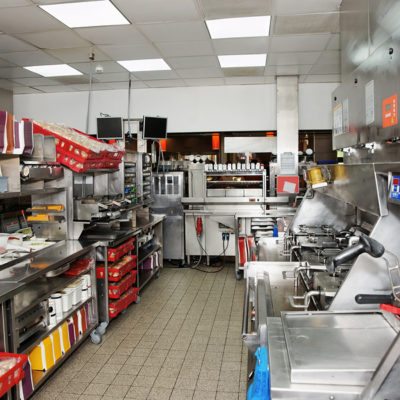How to Boost Energy Efficiency in Restaurants and the Bottom Line
October 26, 2017

Quick-service restaurants can use up to 10 times more energy per square foot than other commercial buildings, according to the Environmental Protection Agency (EPA).
Fortunately, helping the environment — and saving money — can be as easy as changing a light bulb.
Energy efficiency in restaurants generates significant cost savings in the quick-service sector. A light-bulb moment: Start by replacing kitchen appliances and lighting with Energy Star-certified equipment.
A Change of Scenery
Arby’s reduced electricity use by 15.2 percent in its company-owned restaurants since 2011. Energy-efficient equipment upgrades, remodeling and operations changes saved more than $31 million.
Purchase price is only part of the cost of new equipment. But Energy Star-certified products pay for themselves over time in utility savings. The equipment may also be eligible for significant tax credits and other incentives.
Examine all the systems. Heating, ventilation and air conditioning (HVAC), as well as water heaters and ice machines, are overlooked “energy bandits.”
Energy Star provides online calculators to estimate how much money and energy you can save. The Food Service Technology Center has an interactive energy-efficient kitchen-planning tool to explore equipment options throughout the kitchen.
Let There Be Light
Lighting accounts for 13 percent of total energy use in the average restaurant, according to the EPA. So, it makes sense to convert to LEDs wherever possible.
Swap out enter/exit and open/closed signs, external marquees, menu boards and other signage with LED-based options.
Install daylight sensors, which automatically turn off exterior and parking-lot lights, and dim interior lights based on sunlight.
Put occupancy sensors in closets, storage rooms, restrooms and other low-traffic spaces.
Partners in Sustainability
Smart kitchen solutions monitor systems and equipment, and adjust performance automatically.
Choose a sustainable energy partner that’s aware of changes in the market, can provide vendor recommendations and will point you to the best energy-rate options from state to state.
If sustainability is a core concept of your brand (or you want it to be), the Green Restaurant Association provides standards for green certification.
Arby’s and Wendy’s joined the Better Building Challenge from the Department of Energy (DOE), committing to reducing energy use across their company-operated locations. The DOE tracks and reports on their progress, and also offers energy-efficient solutions that have been provided by participants.
Educate Where You Can’t Automate
Digging into the point-of-sale (POS) data can highlight what equipment is necessary during off-peak hours. Use the data to create a startup/shutdown plan for not only the kitchen equipment but POS devices, televisions and other electronics to increase energy efficiency.
Educate employees about conservation and encourage them to report faulty equipment, dripping faucets or leaky seals. Regular service and calibration will keep everything working efficiently.
For operators looking to implement energy efficiency in restaurants, the Conserve program from the National Restaurant Association provides conservation best practices.
Stay informed with Aprio.
Get industry news and leading insights delivered straight to your inbox.
